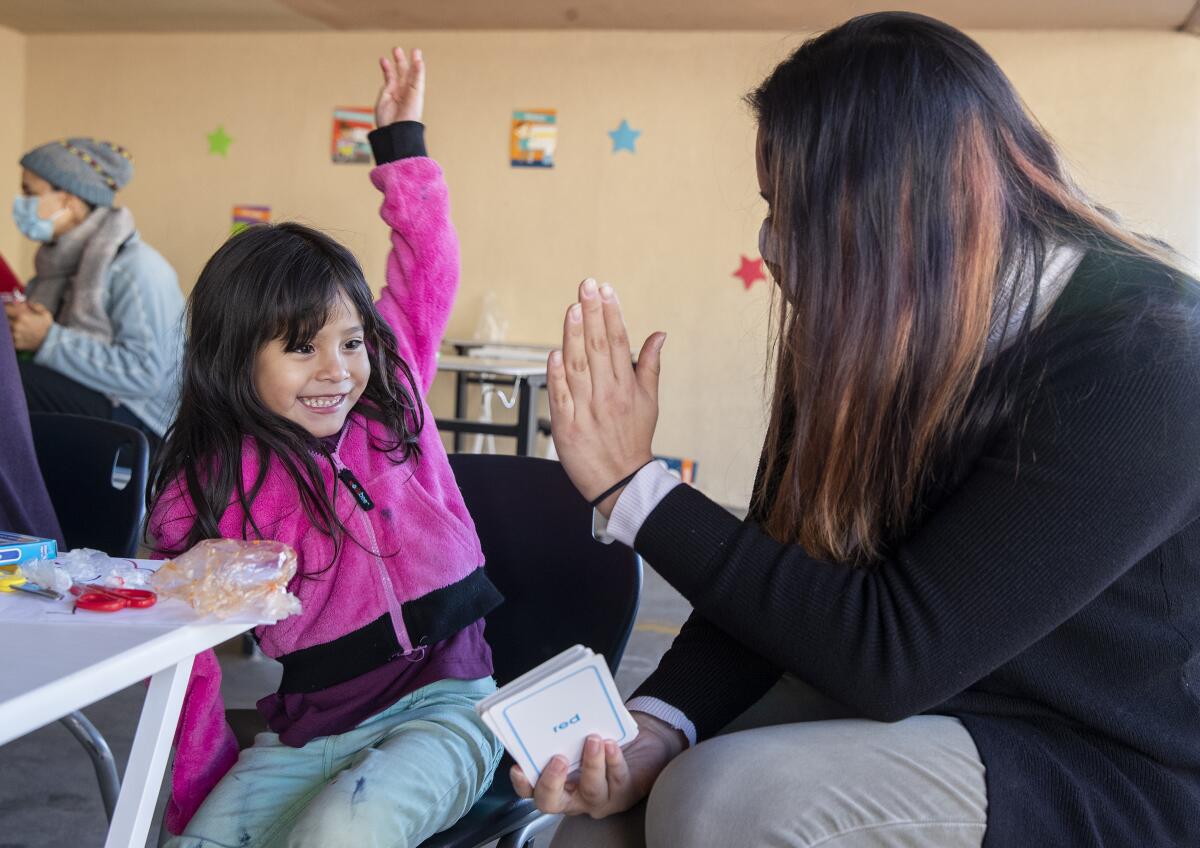Look before leaping into transitional kindergarten

- Share via
Transitional kindergarten — a year that prepares children who aren’t quite old enough or mature enough for kindergarten — boosts school readiness and achievement in the spots around the state where it’s now offered. Los Angeles Unified is among them.
A 2015 study found that the children coming from these programs in California started kindergarten with much better literacy and math skills, although a follow-up study reported that most of the advantages, except reading skills, fell off by the end of the first year. So Gov. Gavin Newsom’s bold new pledge to make the program, abbreviated as TK, universal for California’s public schools is intriguing; better reading alone could make it worthwhile.
Or not. It’s insufficient simply to expand a program that showed some advantages with a comparatively small number (95,000) of students. How it’s done is equally important. Before Newsom commits to potentially quintupling enrollment in transitional kindergarten, he should resolve five issues with significant ramifications for schools, students, parents and the preschool industry. There is real potential here to address social and financial inequities in the state or to worsen them.
• Will there be enough money in future years? Right now, the state and its school districts are awash in federal rescue dollars. But that’s one-time funding. Universal transitional kindergarten would cost $2.7 billion a year and would become part of the Proposition 98 funding guarantee. When the federal spigot closes, Newsom may well be out of office and his successor would face the fallout, which could be ugly. If a time comes when the school budget needs to be cut, core K-12 programs would be affected, a scenario under which low-income and underserved students would be most likely to suffer.
• Are there enough teachers? Despite falling enrollments, California is experiencing an ongoing teacher shortage that especially affects low-income schools. According to a March report by the Learning Policy Institute, the pandemic has worsened the shortage, with many teachers retiring or resigning because of burnout, and there aren’t enough new teachers in the pipeline.
To his credit, Newsom plans to phase in transitional kindergarten over three years, in stark contrast to the rapid and disruptive imposition of the 20-student limit on class sizes for primary grades during the 1990s. The demand for teachers was so high then that low-income schools lost teachers to higher-income districts, and many classes were taught by people with severely substandard training and skills.
Still, expecting to find enough college-graduated, credentialed teachers for hundreds of thousands of new students within three years — teachers who should receive additional training in child development — sounds risky. Newsom is planning to spend substantially more to bring new teachers on board, but that’s no guarantee that college students will be drawn to the field. Well-qualified, talented teachers are crucial to the success of transitional kindergarten and all the grades above it, and if wealthier schools are able to siphon off the most qualified, that worsens inequities among young children.
• How will this affect private preschools and their employees? Many 4-year-olds in preschool attend private centers or small, home-based programs that provide employment for women of color, most of whom lack a college degree. A 2015 report by the Migration Policy Institute found that 39% of early childhood education workers were immigrants, largely Latino, and that percentage was growing rapidly.
Many of these women are older and lack the resources to get the education and training required to teach transitional kindergarten. So those jobs would tend to go to younger and more privileged people, worsening social and financial inequity for these workers.
Of course, what’s best for kids has to take precedence, but Newsom should be planning to make up for this hit to the industry and the possible effect on child care. Preschools are already in shaky financial shape, and if the transitional kindergarten program causes more to go under, the result would be fewer child care openings for 3-year-olds.
• Will they be age-appropriate? Already, transitional kindergartens tend to spend considerably more time on academics than play and activity.
Young children need play. A 2018 report by the American Academy of Pediatrics reinforced this idea, calling for more play in childhood and saying, “Play is not frivolous.” Such activity enhances brain structure, helps kids pursue goals and ignore distractions, and develops children’s creativity, problem-solving skills and a host of other factors needed for success, the report said.
• Will the benefits last? Better reading skills alone would be a huge benefit in a state that often falls short on reading instruction. But it’s a shame that so much of what’s gained in prekindergarten falls off months later. If the state is going to invest this much money in the programs, it needs to examine what can be done during kindergarten to keep transitional kindergarten “graduates” at the higher level they enjoyed at the beginning of the school year.
More to Read
A cure for the common opinion
Get thought-provoking perspectives with our weekly newsletter.
You may occasionally receive promotional content from the Los Angeles Times.









